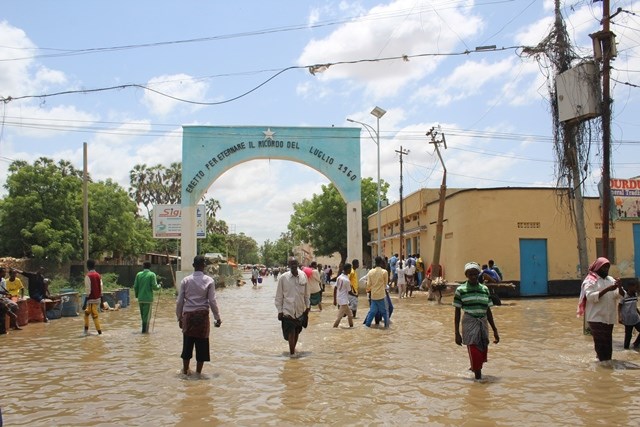Saturday, December 23, 2023
By Abdullahi Warsame Abdi

In recent times, the international community has witnessed a surge in the allocation of funds towards flood protection and drought mitigation projects in Hirshabelle State, Somalia. However, the disheartening reality is that millions of dollars from generous donors have been squandered on projects marred by poor planning, malpractice, mismanagement, and a glaring lack of accountability. As news surfaces of yet another massive donation, this time from Britain, with FAO signing a $43.8 million deal to implement a project aimed at reducing flood risk and mitigating drought in Somalia, it is imperative to reflect on the failures of similar initiatives that preceded it. The recurring pattern of inadequacies raises concerns about the sustainability and effectiveness of these projects, necessitating a critical examination of the past endeavours to salvage public funds and ensure future success.
The Landscape of Failure
Several flood protection and drought mitigation projects in Hirshabelle State have fallen short of their intended objectives. The consequences of these failures extend beyond the squandering of financial resources, impacting the very communities these projects were designed to protect.
Here are a few examples of such failed initiatives:
Building Resilience in Middle Shabelle (“BRIMS”):
● Location: Hirshabelle – Jowhar and Beledweyne
● Funded by: Sweden
● Budget: $6,514,538
Sustainable Water Resource Management (Integrated Water Resource Management, IWRM):
● Location: Middle Shabelle
● Funded by: Germany
● Budget: €3,000,000
Hirshabelle Resilient Riverine Project (HRRP):
● Location: Beledweyne
● Funded by: Italy
● Budget: €6,000,000
Sustainable Flood Management and Risk Reduction Action:
● Implemented by: Ministry of Energy and Water Resources (MOEWR) in collaboration with the United Nations Environment Programme (UNEP)
● Project funded by FCDO and implemented by FAO.
The recurring theme among these projects is their failure to achieve their intended outcomes, raising questions about the adequacy of project planning, implementation, and oversight. To avoid repeating the mistakes of the past, it is imperative to analyze these failures comprehensively.
Critical Recommendations for Future Success
1. Establish a Technical Committee:
To rectify the flaws of previous projects, it is crucial to assemble a technical committee comprising experts in floods and water engineering, economics, and project performance management. This committee should conduct a thorough assessment and review of past initiatives, identifying key shortcomings and proposing viable solutions.
2. Conduct Economic Studies:
Undertake economic studies on projects implemented by multiple partners and donors, such as the Hirshabelle flood projects. Collaborate with national institutes, like the Heritage Institute, to shift their research focus from politics to economic policy, critically examining the efficiency and impact of these initiatives. The assumption of perfection in UN-managed projects should be dispelled through rigorous monitoring and evaluation.
The Imperative for Informed Action
This article serves as an urgent call to national stakeholders to address the persisting issues and challenges plaguing flood protection response projects in Hirshabelle State. While Somalia celebrates its debt relief achieved through years of financial reforms and participation in the World Bank and International Monetary Fund’s Heavily Indebted Poor Countries (HIPC) Initiative, it is paramount to acknowledge that challenges persist. One such challenge is the poor performance management of critical projects like flood protection initiatives.
The notion that the solution lies solely in the rehabilitation of river embankments, strengthening of breakage points, and construction of dikes warrants reconsideration. These measures, far from solving the problem, may exacerbate it by diverting floodwaters to previously unaffected areas. A sustainable solution may require a paradigm shift, such as the construction of a national dam at the border's entrance. Such a dam has the potential to provide consistent irrigation downstream, benefitting regions from Hiraan through Middle Shabelle to lower Shabelle.
Concluding remarks
As the international community rallies behind yet another ambitious project in Hirshabelle State, it is paramount to learn from the failures of the past. The continuation of flood protection and drought mitigation projects without a comprehensive review of previous endeavours poses a significant risk of aid diversion and negative consequences for debt relief efforts. This article serves as a plea for corrective action, urging stakeholders to prioritise project review, engage with local expertise, and ensure accountability for the responsible use of public funds. Only through informed, collaborative efforts can we hope to break the cycle of failure and truly make a positive impact on the lives of the people in Hirshabelle State.
Abdullahi Warsame Abdi is a Former Humanitarian Affairs Specialist